Contents
- Early History
- Local Schools and Early Colonial Accounts
- Colonial History
- Early Institutions
- New Sanskrit College
- COEP Technological University
- Tilak Maharashtra Vidyapeeth
- Local Figures & Organizations
- Shikshan Prasarak Mandali
- Mahatma Phule & Savitribai Phule
- Satyashodhak Samaj
- Deccan Education Society
- Servants of India Society
- Post-Independence Era and Contemporary Educational Infrastructure
- Primary & Secondary Education
- Institutions of Higher Learning
- Savitribai Phule Pune University (SPPU)
- National Defence Academy (NDA)
- Film and Television Institute of India (FTII)
- Indian Institute of Science Education and Research (IISER)
- Bhartiya Vidyapeeth
- Symbiosis International University
- MIT World Peace University (MIT-WPU)
- FLAME University
- Prominent Figures & Organizations
- Sadhu Vaswani
- Graphs
- Enrollment and Dropout Rate
- A. Student Enrollment Numbers
- B. Student Enrollment (Class-Wise)
- C. Student Enrollment (Gender-Wise)
- D. Student Enrollment (By School Management Type)
- E. Drop Out Rate (By Schooling Level)
- F. Drop Out Rate (By Gender)
- Schools
- A. No. of Schools
- B. No. of Schools (Filtered by Gender Mix)
- C. No. of Schools (By School Management Type)
- Teachers
- A. No. of Teachers
- B. No. of Teachers (By School Management Type)
- C. No. of Teachers (Male vs Female)
- D. Education Level of Teachers
- Sources
PUNE
Education
Last updated on 28 July 2025. Help us improve the information on this page by clicking on suggest edits or writing to us.
The educational framework of Pune aligns with the broader structure of the Indian education system, encompassing pre-primary, primary, secondary, and higher education. By the 19th century, the introduction of the Western education framework in the district changed its educational landscape. British administrators and missionaries became actively involved in shaping education in the region.
Still, even as colonial influences grew, the early 20th century saw a wave of local initiatives; its existence indicated an increasing public awareness regarding the importance of education. Local communities took charge of education, a movement that carried into the post-independence era, shaping the district’s educational landscape in lasting ways.
Notably, today, among the various regions in Maharashtra, Pune is renowned as the ‘educational hub’ and is often referred to as the ‘Oxford of the East.’ This distinction comes from its numerous universities and colleges spread throughout the district, making it a significant center for higher education.
Early History
In ancient India, as many scholars note, education was closely connected to religion and spiritual practice. Learning often took place in temples, monasteries, or ashrams, where teachers guided students in subjects related to philosophy, self-realisation, and moral discipline. Over time, access to this learning became more limited, with formal study often reserved for certain castes or occupations.
From the 13th century onwards, the Bhakti movement became an important force for change across India. In Maharashtra, the Bhakti sants shared spiritual ideas through songs, abhangas, and public gatherings, creating spaces where ordinary people could learn outside formal schools. This approach brought moral and religious teaching into daily life and encouraged a sense of community and equality.
Among the well-known Bhakti figures in the region were the siblings Sant Dnyaneshwar, Muktabai, Nivruttinath, and Sopandev, who for much of their life lived in Alandi, near present-day Pune City. Together, they are remembered for their contributions to spiritual and philosophical learning, and for helping democratise knowledge that had long been confined.

Sant Dnyaneshwar is remembered for his commentary on the Bhagavad Gita, which he began at age 12 and completed by 15, making its teachings available to the wider public. Nivruttinath, the eldest, guided Dnyaneshwar’s spiritual path. Sopandev, the younger brother, composed the Sopandevi, a Marathi work that explains spiritual ideas and includes over 50 abhangas. Together, their writings and teachings shaped Marathi literature and continue to be studied and recited across Maharashtra today.
Muktabai, the youngest, is noted for her role in encouraging spiritual learning among women. Her 41 abhangas, including Tati ughada Dnyaneshwara, call for openness and wider access to knowledge. Though she passed away at 18, her work left a lasting impact and attracted followers such as Sant Changdev. she is still honoured today as one of the few woman sants known from her time whose teachings remain part of Varkari sect

A few centuries later, Sant Tukaram of Dehu village continued this tradition. Born in 1608, Tukaram used devotional poetry to speak out against social barriers, drawing on the legacy of saints like Namdev, Dnyaneshwar, Kabir, and Eknath.
Local Schools and Early Colonial Accounts
Interestingly, under the Maratha rulers and later the Peshwas, local pathshalas and the well-known dakshina system together formed an early framework for public schooling in the region. According to the colonial district Gazetteer (1885), “education in Maratha times was carried on by means of indigenous schools, the only trace of public education being the yearly distribution of charity called dakshina.”
The dakshina, originally begun at Talegaon by Khanderav Dabhade Senapati, was later shifted to Poona by the Peshwas. It served partly as an incentive for scholarship but gradually became “a mere giving of alms,” as Captain Moor observed in 1797, “Great sums are given away at Parvati… some come from Surat, Pandharpur, and other distant places… about 40,000 have been known to assemble on this occasion.”
Schooling at this time largely took place in village pathshalas run by Brahmin teachers. These focused on Sanskrit, Hindu law, and religious texts, with some practical arithmetic for merchant castes. The Elphinstone Report (1819) records, “reading was confined to Brahmans, Vanis, and such of the agricultural classes as had to do with accounts.” Elphinstone observed that many villages and towns had schools, but education was still mostly limited to Brahmins and clerical families.
Colonial History
In the 19th century, Pune’s education system saw steady transformation under British administration, a shift that notably unfolded somewhat earlier here than in many other districts of Maharashtra. What stands out about Pune’s case is that here there was consistent emphasis on developing primary, secondary, and even higher education during this period (an approach that, as indicated by data from the district Gazetteers of Maharashtra, was uncommon elsewhere at the time). This multi-tiered approach meant that significant educational infrastructure took root during these years.
Rather than replace these schools, Mountstuart Elphinstone advised improving what already existed. He encouraged using familiar subjects, Hindu literature, moral fables, and simple accounts, so that new schools would not face resistance. In 1821, the New Sanskrit College (see more below) was set up in Pune to keep Sanskrit learning alive but also to bring it under new oversight.
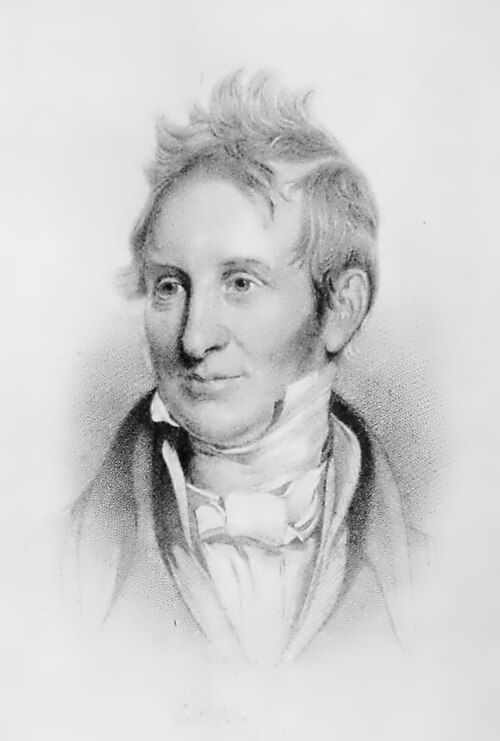
By the 1820s and 30s, a few small regional language schools opened in places like Sasvad, Talegaon, and Junnar. Gazetteer records note that by 1847 there were 18 government-run schools in the district teaching basic reading, writing, and arithmetic, while local pathshalas still operated alongside them, often funded through small donations or grain payments to teachers.
Elphinstone’s idea of cautious reform shaped Pune’s educational direction for decades. By the 1850s, the district had nearly 95 government schools, including early teacher-training classes and high schools. By 1882–83, it is noted that Pune had 266 government schools with over 17,000 students enrolled.
Early Institutions
New Sanskrit College
Many major institutions were established during the British period, and the New Sanskrit College was among the earliest. As briefly mentioned above, it was established in 1821 in Pune as part of early British educational reforms under Mountstuart Elphinstone, who was then Commissioner for the Deccan and later Governor of Bombay. According to the colonial district Gazetteer (1885), Elphinstone promoted the idea that introducing regulated learning should build on existing systems rather than replace them outright. The college aimed to preserve classical Sanskrit studies while bringing them under structured supervision and broadening access to ancient Hindu literature and sciences. This reflected Elphinstone’s belief that gradual improvements in education could bridge cultural gaps without provoking local resistance.
In 1834, the college underwent significant reorganisation, and by 1837, under the supervision of Captain Candy, it began to expand its curriculum. At the suggestion of Sir Robert Grant, then Governor of Bombay, a medical class was introduced, combining the study of European medical knowledge with selected Sanskrit medical texts. A well-known local Brahman skilled in surgical practice and Ayurvedic treatises joined the faculty at this time.
COEP Technological University
Over the years, many specializations and fields also emerged. The College of Engineering Pune (COEP), now known as COEP Technological University, is one of India’s oldest engineering colleges. It began in 1854 as the Poona Engineering Class and Mechanical School, established on the advice of Lieutenant-Colonel Walter Scott of the Bombay Engineers. The school’s original aim was to train technical assistants for the Public Works Department to compensate the growing need for skilled personnel to support large-scale colonial infrastructure projects.
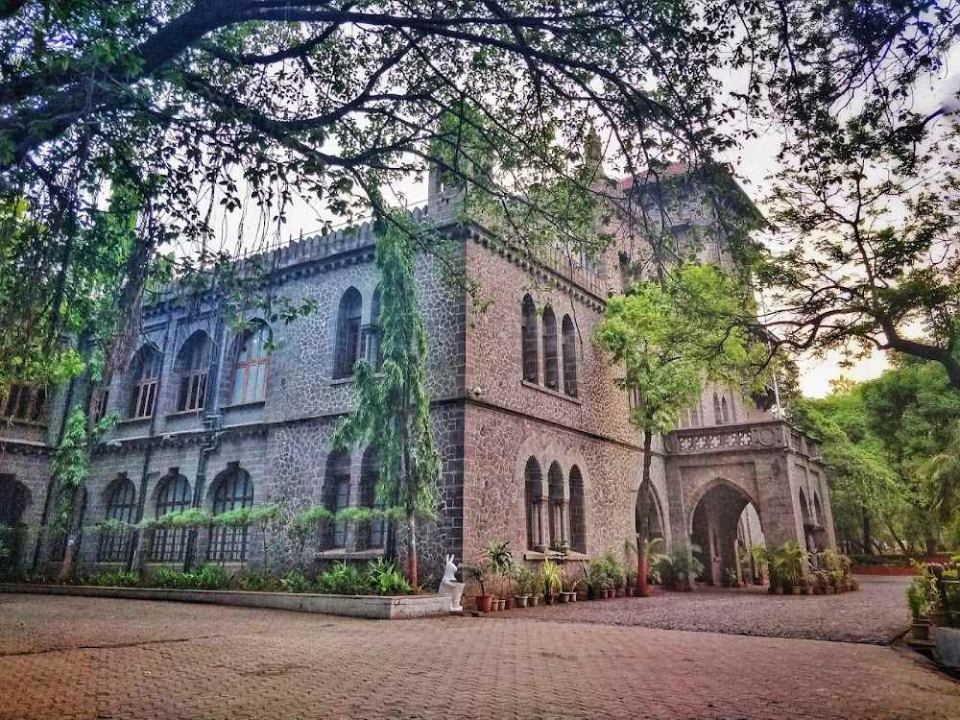
By 1864, the institution had grown into the Poona Civil Engineering College and soon expanded its courses to include forestry and agriculture. In 1880, it became known as the College of Science, broadening its academic reach further. Its dedicated campus was formally opened on 5 August 1865 by Sir Bartle Frere, then Governor of Bombay. Today, COEP remains one of India’s oldest and most respected engineering institutions, continuing its legacy of technical education that began in the mid-19th century.
Tilak Maharashtra Vidyapeeth
While entities from the West played a significant role in shaping the educational landscape of Ahilyanagar, local figures and organizations also emerged as key contributors. Many of them established institutions that continue to shape education in the district today, alongside community-led organizations that have played a lasting role in its development. Among these was the Tilak Maharashtra Vidyapeeth (TMV), established in 1921 as an educational memorial to Lokmanya Bal Gangadhar Tilak, who is often remembered as the Father of Indian Unrest and an early advocate of National Education.
According to its institutional records, TMV was founded following Mahatma Gandhi’s guidance during the Indian National Congress session held at Nagpur in 1920, with the aim of advancing Tilak’s vision of national education alongside the principles of Swaraj, Swadeshi, and Boycott.
From its early years, the Vidyapeeth developed and implemented a long-term national education programme through its affiliated colleges and institutions. It coordinated efforts among similar educational bodies and expanded facilities for higher education in Arts, Science, Commerce, and Ayurveda at both undergraduate and postgraduate levels. A notable feature of its approach was an emphasis on Sanskrit as a core part of India’s cultural heritage and the decision to provide instruction primarily in Marathi. Today, it holds the status of a Deemed-to-be University.
Local Figures & Organizations
Shikshan Prasarak Mandali
As mentioned above, several local figures and organizations have played a significant role in expanding educational opportunities and driving social reform in the region. One such notable organization is the Shikshan Prasarak Mandali (SPM), which has played a significant role in the development of education in Pune. It is one of Pune’s oldest educational societies and its origins date back to 1 January 1883, when a group of trained teachers founded Nutan Marathi Vidyalaya, a Marathi-medium school.The school was established to commemorate Vishnushastri Chiplunkar, a notable figure in Marathi literature and education.
In March 1888, the founders formally registered themselves as the Shikshan Prasarak Mandali, assuming management of Nutan Marathi Vidyalaya. Over time, the institution expanded to include a high school and subsequently laid the foundation for higher education initiatives.
In 1916, SPM established New Poona College, which was later renamed Sir Parashurambhau College (SP College). Inaugurated by Lord Willingdon, then Governor of Bombay, the college began as a second-grade Arts College and gradually evolved into a full-fledged Arts and Science institution. In 1926, the college shifted to new premises on Baba Maharaj Grounds, land secured with the support of Bal Gangadhar Tilak.
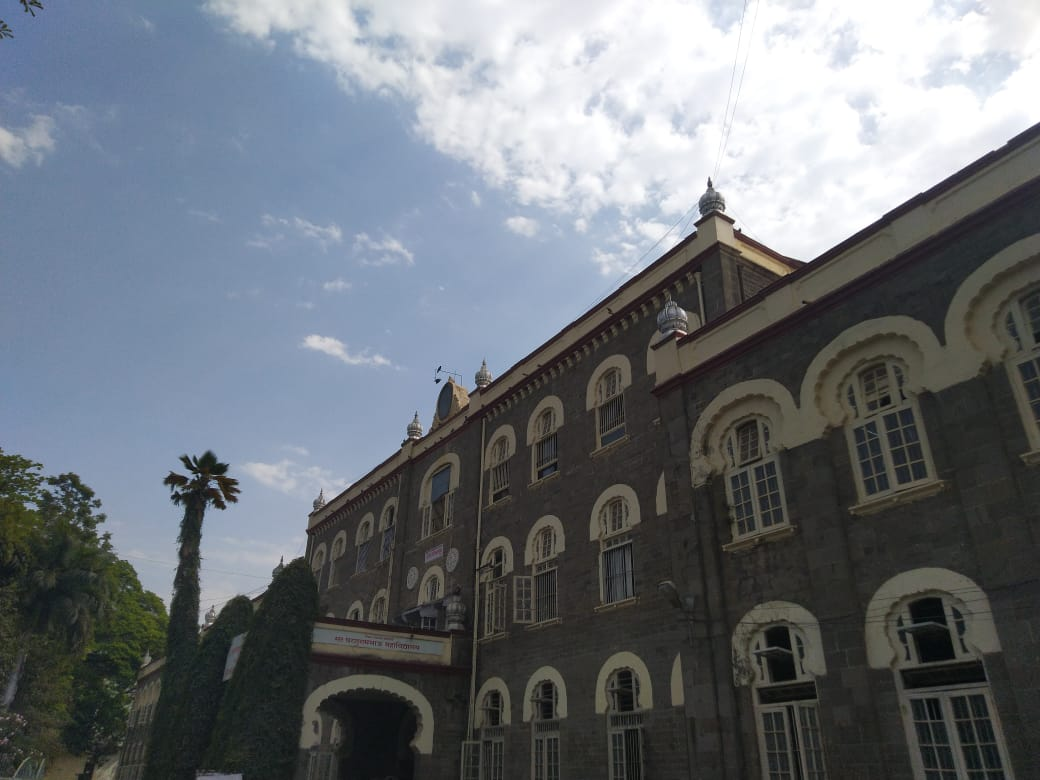
In 1928, Raja Saheb of Jamkhandi, who served as President of the Mandali, donated ₹2 lakh to the college in memory of his father, Sir Parashurambhau Patwardhan. In recognition of this contribution, the college was named Sir Parashurambhau College, which continues to be a leading undergraduate institution in Pune.
Mahatma Phule & Savitribai Phule
Another significant contribution to the region’s educational and social reform came from Mahatma Jyotirao Phule (1827–1890) and Savitribai Phule (1831–1897), pioneering social reformers whose work laid the foundation for modern inclusive education in Maharashtra. At a time when access to learning was restricted by caste and gender, the Phules challenged deep-rooted barriers through a series of radical initiatives that reshaped Pune’s educational landscape.

In 1848, with the support of Jyotirao Phule, Savitribai Phule opened one of India’s first schools for girls at Bhide Wada, in Budhwar Peth, Pune. This small school quickly became a landmark in the history of social reforms in India. Despite facing relentless social ostracism, harassment, and threats, Savitribai walked miles daily to teach young girls from marginalized communities. She also trained other women as teachers, creating one of the first organized efforts to build a corps of female educators in the country.
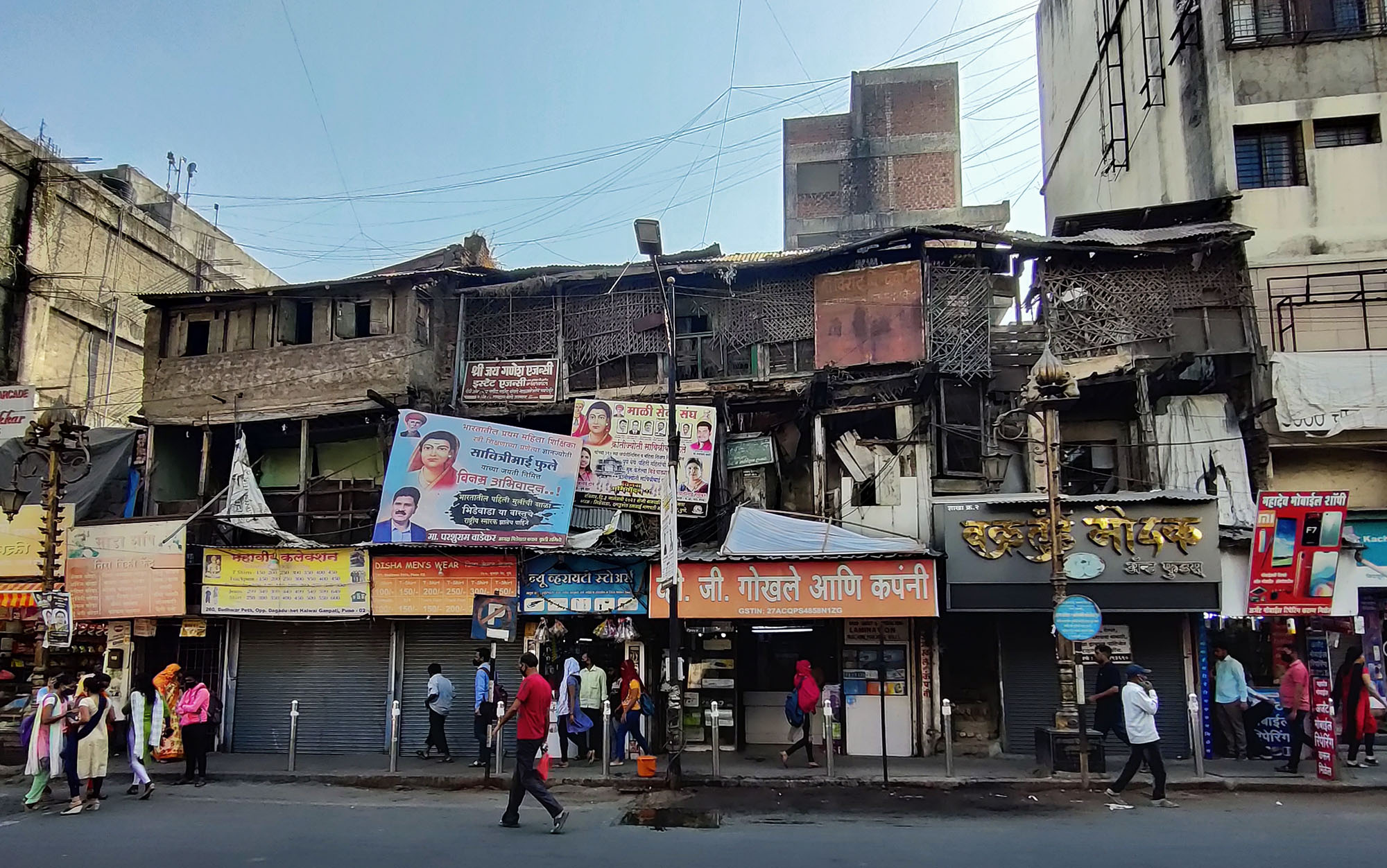
Between 1848 and 1852, the Phules established several more schools for girls, Dalits, and working-class children across Pune and its surroundings.
Satyashodhak Samaj
In 1873, Jyotirao Phule founded the Satyashodhak Samaj (Society of Seekers of Truth) in Pune. It was one of Maharashtra’s earliest organized movements dedicated to challenging caste-based discrimination and advocating for social equality through education and public discourses.
Recognizing knowledge as essential for social upliftment, the Samaj established schools for girls and children from marginalized communities, groups that had historically been denied access to education. Many of these schools employed women as teachers, which at the time was an important step forward for both gender and social reform.
The Samaj also made strategic use of the press to reach wider audiences. Newspapers such as Deenbandhu and Shetkaryancha Kaivari, started by Satyashodhak leaders and supporters, gave voice to oppressed communities, promoting ideas of equality, rights, and the importance of education in everyday Marathi. Publications such as the Satyashodhak Patrika and various pamphlets further challenged orthodox beliefs and encouraged families to send their children to school.
Deccan Education Society
The Deccan Education Society (DES) was founded in 1884 by a group of visionary Indian reformers, including Bal Gangadhar Tilak, Vishnushastri Chiplunkar, Gopal Ganesh Agarkar, and Vaman Shriram Apte. Their aim was to modernize education and make it accessible to Indians under colonial rule.
The Society’s first major initiative was the New English School, established in 1880, which laid the groundwork for a new model of secondary education combining Western and Indian knowledge systems. Building on this success, DES founded Fergusson College in 1885, which quickly became one of the region’s leading higher education institutions. The college offered advanced courses in arts and sciences and attracted students and teachers who would go on to play important roles in India’s freedom struggle.

Aside from academics, the Society became a platform for broader social reform. Many of its founders were also active in the Indian independence movement and used the institutions to promote ideas of self-reliance, national pride, and modern civic education. Today, the Deccan Education Society continues to run several schools and colleges across Maharashtra.
Servants of India Society
The Servants of India Society, founded by Gopal Krishna Gokhale in 1905, was one of the earliest organized efforts to promote education, social welfare, and political training among Indians during the freedom movement.
Continuing Gokhale’s vision, the Gokhale Institute of Politics and Economics (GIPE) was established on 6 June 1930 in Pune by the Servants of India Society with support from Shri R.R. Kale. The institute aimed to promote advanced research and education in economics and political science to prepare Indians for self-governance and policy leadership. The institute received Deemed-to-be University status in 1993 and remains one of India’s oldest research centers in social sciences.
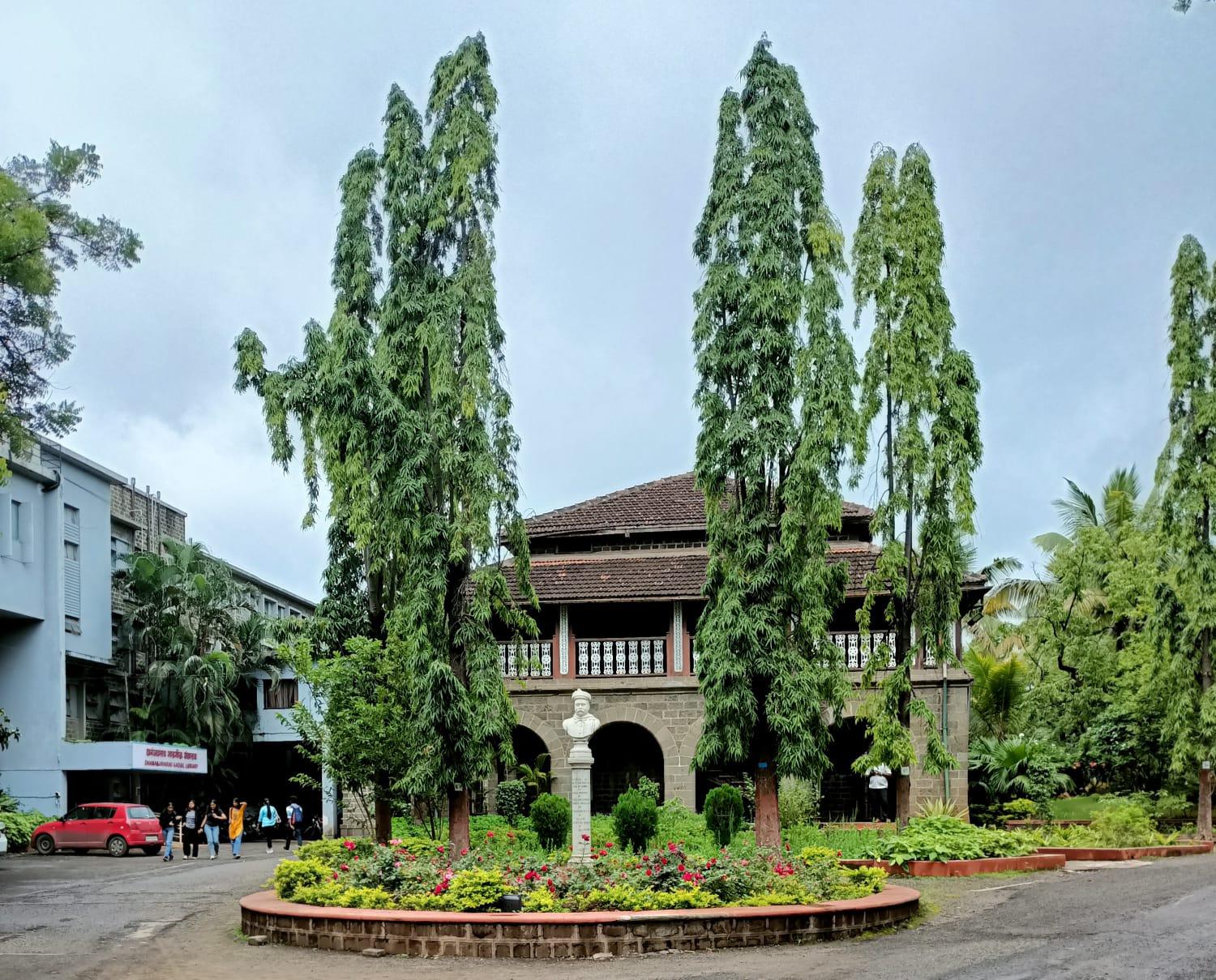
Post-Independence Era and Contemporary Educational Infrastructure
Following India's independence, the education system in Pune underwent major transformations. The introduction of structured education levels—pre-primary, primary, secondary, and higher education and the implementation of National Education Policies heavily shaped the educational landscape of the district. Over the years, the education sector has developed with contributions from both government-funded institutions and private organizations. Additionally, Educational boards were also introduced, each offering distinct curricula and standards, providing students with more choices.
Primary & Secondary Education
Basic infrastructure for primary and secondary education has existed in Pune for decades, but its growth has been shaped by rising enrollment and active involvement from local communities, educators, and reformers. Schools are now spread across the district’s various wards and neighbourhoods, reflecting steady expansion and improved access.
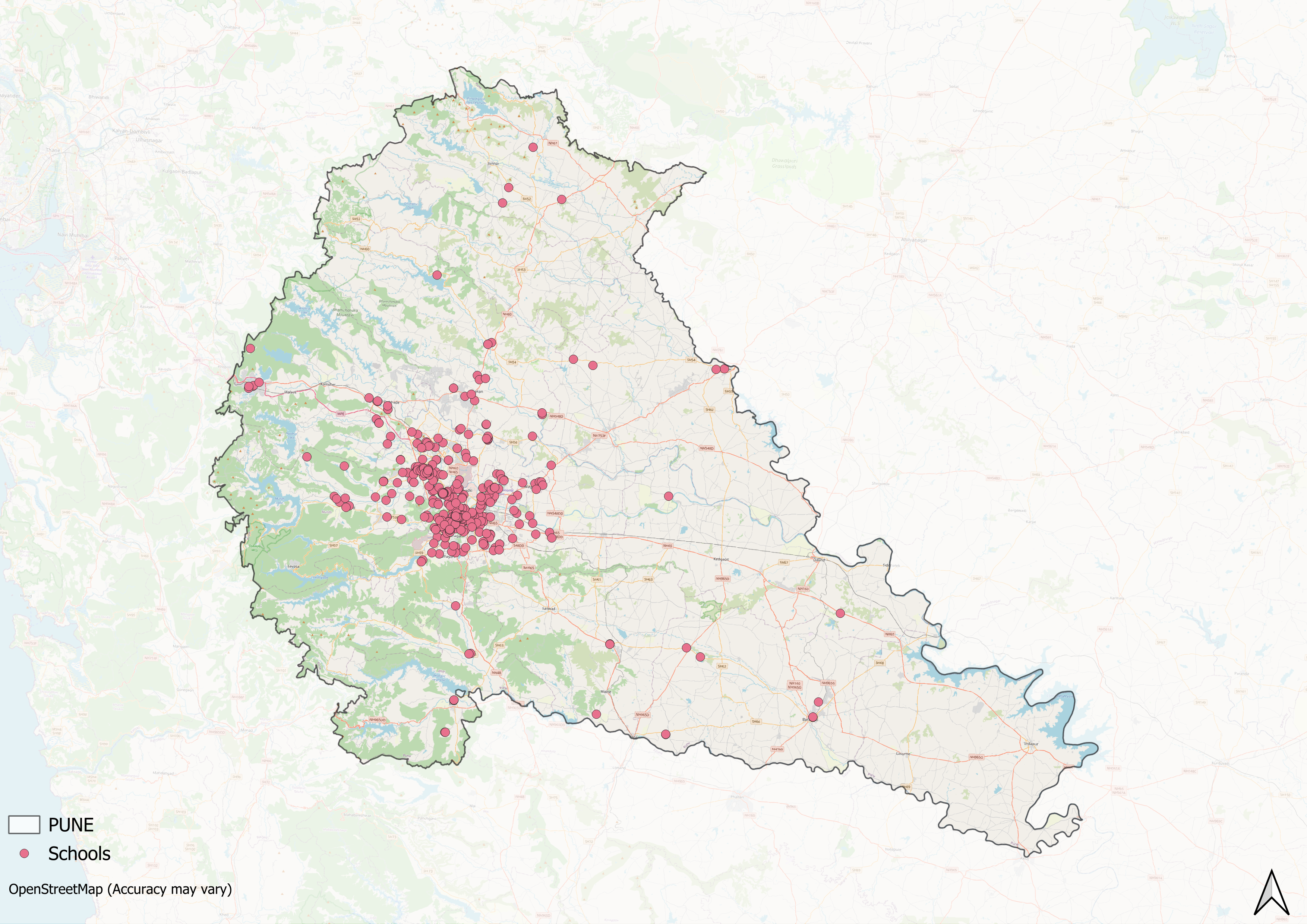
Notably, unlike many other cities in Maharashtra, Pune has a comparatively wide range of school boards and curricula available to students. The Central Board of Secondary Education (CBSE) is among the most widely followed boards in the city. The Indian Certificate of Secondary Education (ICSE) board is also common, particularly among families who relocate frequently, as both CBSE and ICSE maintain a uniform syllabus across different states.
International curricula, such as the International Baccalaureate (IB) and Cambridge International, have become increasingly popular in recent years, particularly among Overseas Citizens of India (OCI) and students planning to pursue higher education abroad. Schools offering IB or Cambridge programmes, including Indus International School, DLRC, and Mahindra International School, generally provide a range of facilities and follow globally recognised frameworks. These schools are usually privately managed and have higher tuition fees than state or national board schools.
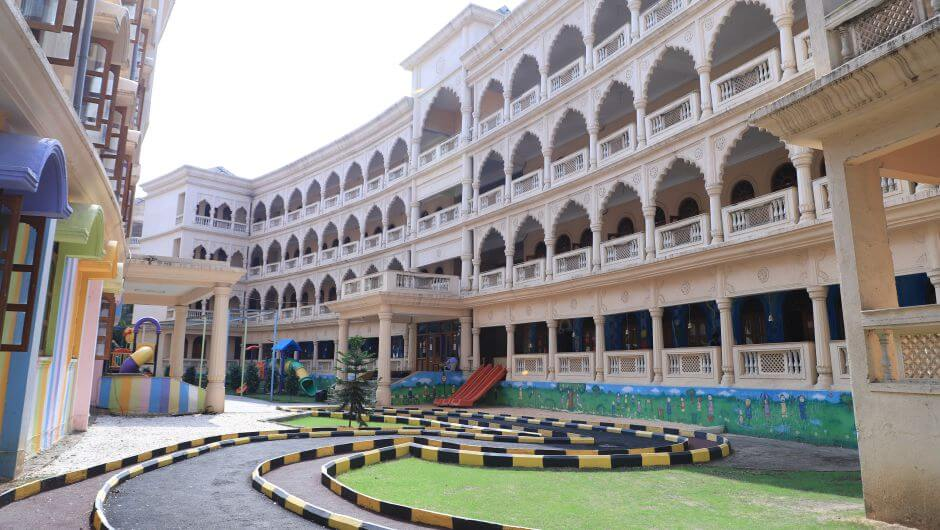
The Secondary School Certificate (SSC), administered by the Maharashtra State Board of Secondary and Higher Secondary Education, also remains the most widely followed state-level curriculum in Pune and across Maharashtra.
Institutions of Higher Learning
Pune also emerged as an important centre for higher education following Independence, with several prominent institutions established in the decades that followed. These institutions have played a significant role in shaping the city’s educational landscape and continue to attract students from across India and abroad.
Savitribai Phule Pune University (SPPU)
One of the most notable institutions established in the post-independence period is Savitribai Phule Pune University. Created in 1949 under the Poona University Act, it was among the first universities founded in India after independence.
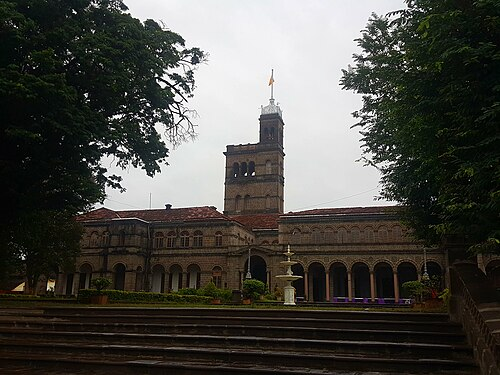
Its 411-acre campus, which once served as the seasonal residence of the Governor of Bombay, includes the historic Governor’s House, which remains a prominent landmark. Originally named Pune University, it was renamed in 2015 in honour of Savitribai Phule, who, together with Jyotirao Phule, made significant contributions to education and social reform. As of 2022, the university ranked 12th in the National Institutional Ranking Framework (NIRF) and continues to be a leading centre for higher learning.
National Defence Academy (NDA)
Another significant institution is the National Defence Academy (NDA), which was established in 1954 at Khadakwasla, near Pune. The NDA is India’s premier joint services training academy, providing integrated education and training for cadets of the Army, Navy, and Air Force.
Spread over approximately 7,000 acres, the academy combines rigorous military training with academic study, offering degrees in arts and technology. In a landmark ruling in 2021, the Supreme Court of India allowed the admission of women to the NDA for the first time. Over the years, the academy has produced many distinguished alumni, including recipients of the Param Vir Chakra and Ashok Chakra, as well as several former Chiefs of Staff.
Film and Television Institute of India (FTII)
Pune is also home to the Film and Television Institute of India, which was founded in 1960 under the Ministry of Information and Broadcasting. Since its establishment, FTII has played an influential role in developing film and television education in India. Its graduates include well-known directors, actors, and technicians such as Rajkumar Hirani, Om Puri, and Satyajit Ray, who have made significant contributions to Indian and international cinema.
Indian Institute of Science Education and Research (IISER)
The Indian Institute of Science Education and Research in Baner was founded in 2006 as an autonomous public university. It focuses on research and education in the basic sciences, including physics, chemistry, mathematics, biology, and earth and climate sciences.
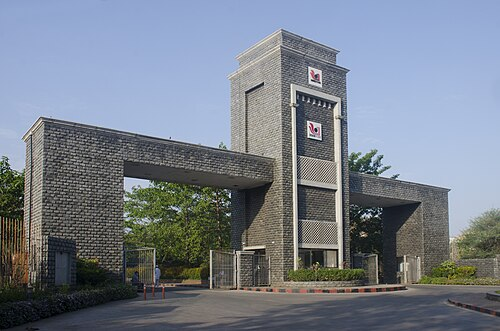
Bhartiya Vidyapeeth
In addition to its public institutions, Pune is known for its large number of private universities, which distinguish it from many other districts in Maharashtra. Founded in 1964, Bharati Vidyapeeth is one of the oldest private institutions in Pune. It was awarded “deemed university” status in 1996, and now encompasses over 150 educational units, including medical, engineering, law, management, pharmacy, and agriculture colleges . In 2023, it was ranked 91st among universities in India by the National Institutional Ranking Framework (NIRF), and holds ‘A’ accreditation from NAAC.
Symbiosis International University
Symbiosis International University is a private deemed university based in Pune. It was established in 2002 by the Symbiosis Society, which was originally founded in 1971 by Dr. S. B. Mujumdar. In the National Institutional Ranking Framework (NIRF) 2023, it was ranked 32nd among Indian universities.
The University has several campuses in and around Pune. Key locations include the Viman Nagar Campus, which houses design, liberal arts, and media studies institutes; the Lavale Campus, which hosts its main business, technology, and research centres; and the Senapati Bapat Road Campus, which includes the law school and economics programmes. Symbiosis also operates specialised facilities in Hinjewadi for information technology.
MIT World Peace University (MIT-WPU)
MIT World Peace University, formerly known as MIT Pune, was founded in 1983 and adopted its present name in 2017. The university offers programmes in engineering, science, management, law, design, and related areas.

MIT World Peace University[11]
MIT World Peace University is based primarily at its main campus in Kothrud, Pune, which was originally established as part of the MIT Group of Institutions in 1983. This site remains the university’s central location for its engineering, management, science, and other major academic programmes. In addition to its Kothrud campus, MIT-WPU operates facilities in Alandi and Loni Kalbhor.
FLAME University
FLAME University is a private university located in Lavale, Pune. Established in 2007, it focuses on liberal education and offers an interdisciplinary curriculum that combines subjects in the humanities, social sciences, business, and management.
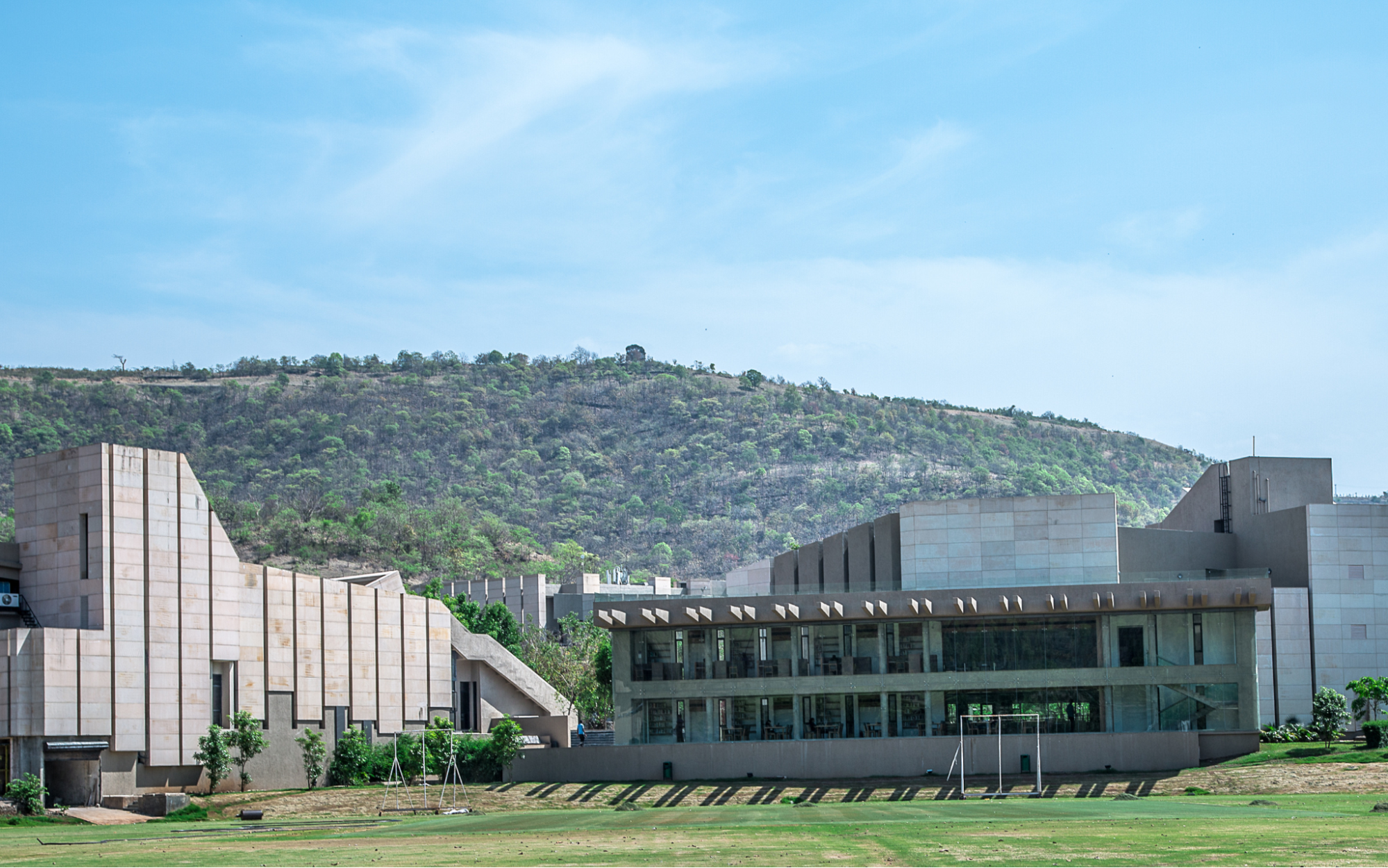
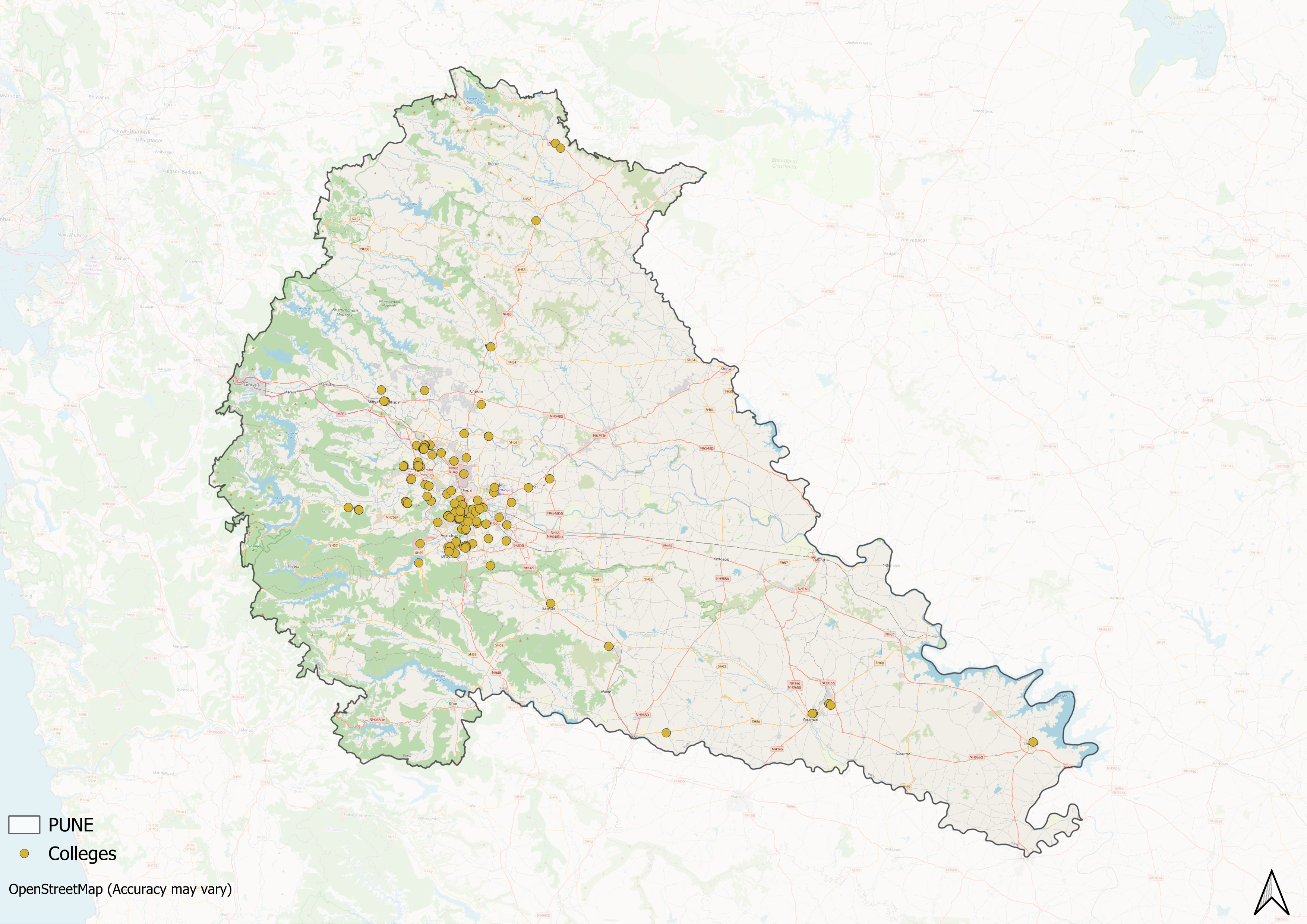
Alongside these institutions, many more spaces for higher learning operate across the district, offering programmes in a range of fields. However, while one can see here that higher education opportunities have expanded since the post-independence days, geographic disparities appear to persist, with urban centers having better access to institutions compared to rural areas.
Prominent Figures & Organizations
Sadhu Vaswani
The Mira Movement, founded by Sadhu Vaswani, is an educational and social reform initiative focused on promoting women’s education in India. The movement began with the establishment of St. Mira's School in Hyderabad (Sindh) on 1 January 1933. Vaswani, an educator and philosopher, aimed to expand access to education for women at a time when opportunities were limited.

The Mira Movement emphasized holistic education by combining academic learning with moral and spiritual values. In 1950, the St. Mira’s Educational Board was set up under Maharishi D.K. Karve to expand the work initiated by Vaswani. Today, the movement’s legacy continues through various institutions in Pune and elsewhere, including primary, secondary, and higher education colleges dedicated to women’s empowerment through education.
Graphs
Enrollment and Dropout Rate
Schools
Teachers
Sources
"Satyashodhak Samaj: Modern India’s First Organised Challenge to Brahmanism." 2020.TheSatyashodhak.com. April 2021. Accessed June 29, 2025.https://thesatyashodhak.com/satyashodhak-samaj-modern-indias-first-organised-challenge-to-brahmanism/.https://thesatyashodhak.com/satyashodhak-sam…
Amrita IAS. n.d.Philosophy of Sant Tukaram.
Arya Daoo. 2023.Muktabai: Her Contribution to Bhakti Movement and Protofeminism. Accessed March 25, 2025.
Bharati Vidyapeeth. About Bharati Vidyapeeth University..
FLAME University. FLAME University: The Pioneers of Liberal Education in India.https://www.flame.edu.in/.https://www.flame.edu.in/
Gazetteer of the Bombay Presidency. 1885 (Reprinted 1992). Poona, Vol. XVIII, Pt. III. The Government Central Press, Bombay.
http://www.unipune.ac.in/university_files/university_history.htmhttp://www.unipune.ac.in/university_files/un…
https://amritaias.com/philosophy-of-sant-tukaram/#:~:text=Tukaram%20taught%20about%20%E2%80%9CAbangas%E2%80%9D%20among,River%20to%20prove%20his%20divinity.https://amritaias.com/philosophy-of-sant-tuk…
https://dbt.pmc.gov.in/Uploads/FrontendContent/b1c5ceb3-338f-4871-9582-1941940db335.pdfhttps://dbt.pmc.gov.in/Uploads/FrontendConte…
https://en.wikipedia.org/wiki/Tukaramhttps://en.wikipedia.org/wiki/Tukaram
https://feminisminindia.com/2023/03/24/muktabai-her-contribution-to-bhakti-movement-and-protofeminism/https://feminisminindia.com/2023/03/24/mukta…
https://www.airo.co.in/display-publication/1371https://www.airo.co.in/display-publication/1…
https://www.bvuniversity.edu.in/about/bharati-vidyapeethhttps://www.bvuniversity.edu.in/about/bharat…
https://www.iskconsaswad.com/saswad-punyabhoomi.phphttps://www.iskconsaswad.com/saswad-punyabho…
https://www.nirfindia.org/Rankings/2022/OverallRanking.htmlhttps://www.nirfindia.org/Rankings/2022/Over…
https://www.stmiraschool.org/managementhttps://www.stmiraschool.org/management
ISKCON Saswad. n.d.Saswad Punyabhoomi..
National Institutional Ranking Framework (NIRF). 2022.Overall Ranking 2022. Ministry of Education, Government of India..
National Institutional Ranking Framework. 2023.NIRF India Rankings 2023: Overall. Ministry of Education, Government of India.https://www.nirfindia.org/Rankings/2023/UniversityRanking.htmlhttps://www.nirfindia.org/Rankings/2023/Univ…
Pune Cultural Mapping Team. 2021. “Bhide Wada.”Sahapedia. Accessed June 29, 2025.https://map.sahapedia.org/article/Bhide%20Wada/3365https://map.sahapedia.org/article/Bhide%20Wa…
Pune Municipal Corporation. DBT Document.
Sanyogita Sharma. 2022.Bhakti and Jnana- A Beautiful Amalgam: A Study Of The Poems Jnandev, Muktabai, Janabai. AIRO Journals. vol 4 no. 3.
Savitribai Phule Pune University. n.d.University History.
St. Mira’s School. Management.
Wikipedia Contributors. MIT World Peace University, Wikipedia.https://en.wikipedia.org/wiki/MIT_World_Peace_University.https://en.wikipedia.org/wiki/MIT_World_Peac…
Wikipedia Contributors. n.d.Tukaram. Last modified May 27, 2024.
Wikipedia Contributors. “Indian Institute of Science Education and Research, Pune,” Wikipedia.https://en.wikipedia.org/wiki/Indian_Institute_of_Science_Education_and_Research,_Pune.https://en.wikipedia.org/wiki/Indian_Institu…
Wikipedia Contributors.“Sir Parashurambhau College,” Wikipedia.https://en.wikipedia.org/wiki/Sir_Parashurambhau_College.https://en.wikipedia.org/wiki/Sir_Parashuram…
Last updated on 28 July 2025. Help us improve the information on this page by clicking on suggest edits or writing to us.